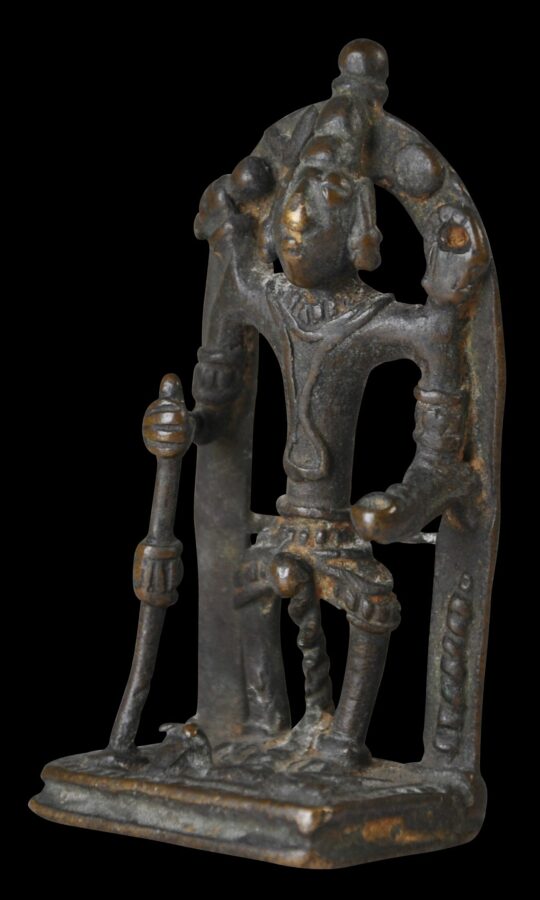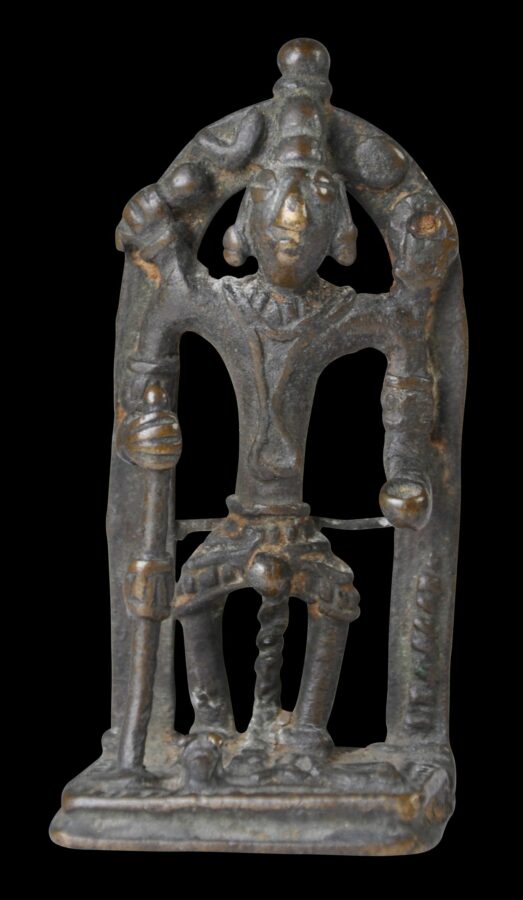This tribal bronze shows Shiva as Bhikshatana – the wandering mendicant or supreme beggar.
Shiva has a staff and a begging bowl in his two front hands. Two rear arms are suggested, cast onto the arched aureole behind Shiva and these probably hold a discus and conch.
A small dog has been cast before Shiva.
The reverse shows two fine struts that run horizontally across the back of the aureole.
There are two versions as to why Shiva assumes the form of a wandering beggar. One is as penance for severing Brahma’s fifth head. He wanders the universe in the form of a naked mendicant, begging for alms with a skull cup made from Brahma’s missing head as his begging bowl, until his sin is expiated upon reaching the holy city of Varanasi (Benares). The other version tells of Shiva as Bhikshtana’s visit to a pine forest to dispel the ignorance of sages and lead them to true knowledge. During his visit, he seduces the wives of the sages. The sages confront Bhikshatana who ultimately triumphs, establishing the worship of the Linga as his symbol.
The bronze is fine and intact. It has a splendid patina.
References
Aryan, K.C., Folk Bronzes: Of North Western India, Rekha Prakashan, 1973.
Blurton, T.R., Hindu Art, The British Museum Press, 1992.






